Symposium - two youths share a couch, a boy. The youths recline to the left. The one on the left of the couch turns his head to the right. He holds a black skyphos in his left hand and holds up his empty right hand as if playing kottabos. The youth on the right holds a black skyphos with a reserved band at handle level in his left hand and holds out a cup by one handle in his right, ready to flick it in the game of kottabos. His mouth is open. Both youths wear a dotted himation with a black border and have a red band with five large leaves at the front in their hair; they recline against cushions decorated with groups of three stripes separated by rows of dots. The couch's legs are cut off by the border, as are the first youth's legs. Below the couch is a three-legged table with two spare red fillets with leaves trailing from it. In front of the table a naked boy moves to the right, but turns his head back to the left.
License
Creative Commons Attribution-ShareAlike

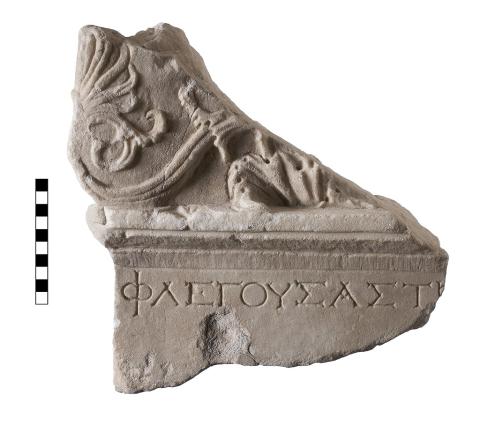
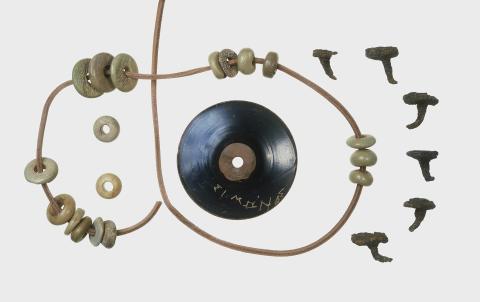
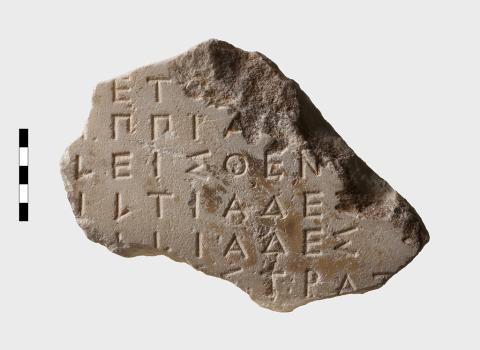
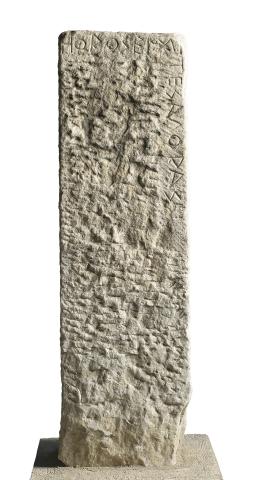
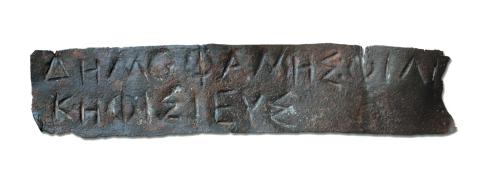
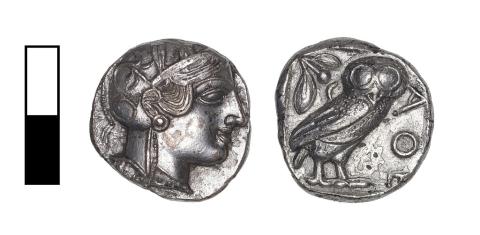
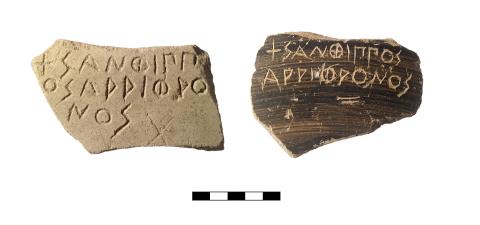
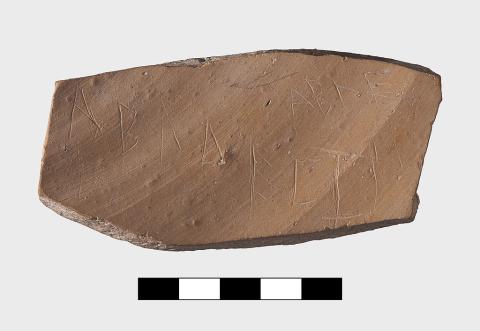
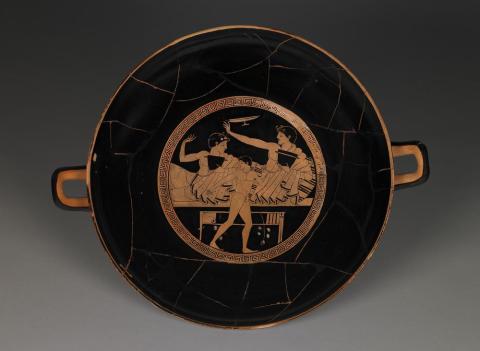
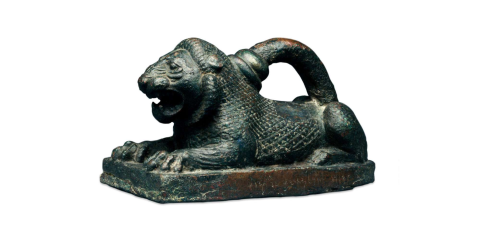
Bibliography:
Agora XVII, no. 1012, p. 176, pl. 80.
Agora XXXV, no. 369, pl. 120.